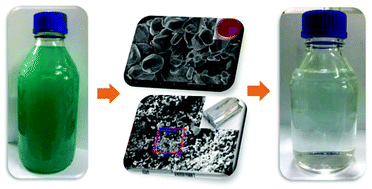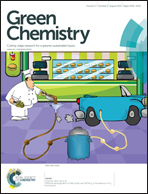Treatment of indium-tin-oxide etching wastewater and recovery of In, Mo, Sn and Cu by liquid–liquid extraction and wet chemical reduction: a laboratory scale sustainable commercial green process†
Abstract
A laboratory scale sustainable commercial green process for treatment of indium-tin-oxide (ITO) etching wastewater and total recovery of In, Mo, Sn and Cu by combination of liquid–liquid extraction and wet chemical reduction has been developed. The ITO etching wastewater is a threat to the ecosystem and human health, containing significant amounts of valuable metals like In and Cu. Metals and 100 nm Cu nanopowder with 5N purity have been recovered. The developed process concurrently treats the ITO etching wastewater and recovers pure metals. By this process, Mo and Sn are recovered by liquid–liquid extraction, and In is recovered through liquid–liquid extraction followed by wet chemical reduction. Value added semiconductor industry grade Cu nanopowder is recovered through wet chemical reduction using ascorbic acid. After a series of treatments, the wastewater is free of pollutants, worthy of use in the same industry or can be disposed of. The process is a sustainable, green, versatile and flexible process.



 Please wait while we load your content...
Please wait while we load your content...